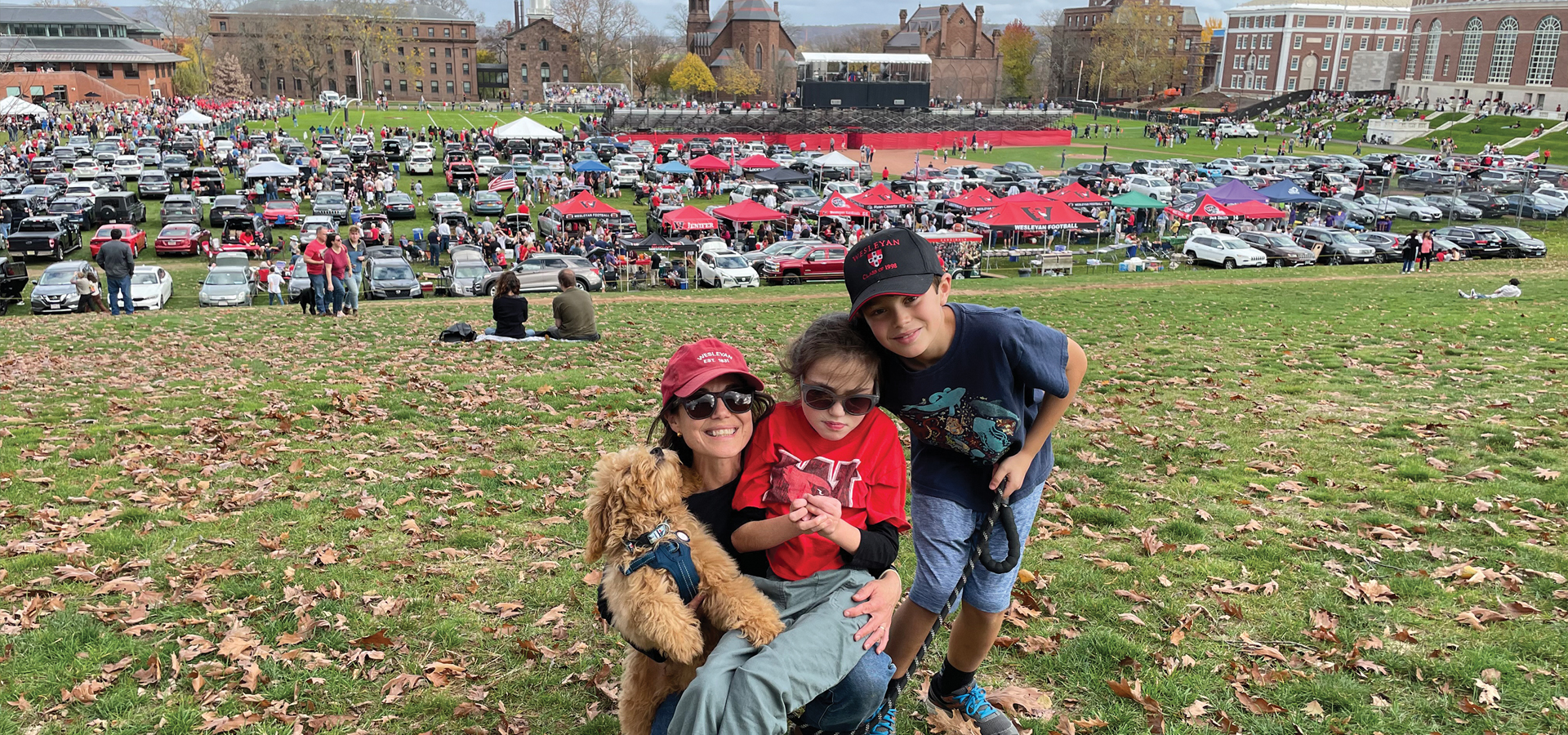Alum to Alum: Rett Syndrome and the Invaluable Work of Dr. Michael Greenberg ’76

In April 2016, Wesleyan magazine published a heartfelt letter to the editor by Lena DeSantis ’98 praising the work of Dr. Michael Greenberg ’76 and his efforts to uncover the roots of Rett syndrome, a disorder that primarily affects girls. The letter told a story we don’t often get to tell: the impact of one alumnus’s work on another alumna (miles and years apart) and the hopeful increments that can make a world of difference in a life. Eight years later, as we celebrate Dr. Greenberg with an honorary degree during our 2024 Commencement ceremony, we reached out to DeSantis again, to see how she and her family are doing and to reflect on how science can change the course of a life in just a few years.
A few years ago, I was thumbing through the Wesleyan alumni magazine. It was one of those editions that you feel especially connected to. The cover story was about Hamilton, which at that time was an inescapable part of American culture. The issue also included a touching piece on the World Trade Center Museum that I appreciated on many levels. But one small corner story stopped me cold. It was an announcement that Dr. Michael Greenberg had won a prestigious Gruber Neuroscience Prize. I didn’t (and still don’t) know Dr. Greenberg personally, but I knew his research played an important part in affecting my daughter Maren’s life.
Maren has Rett syndrome, a genetic disorder caused by random mutations in one of our brain’s master genes called MECP2. Predominantly affecting girls, Rett is characterized by a normal one-to-two years of development followed by a sudden regression resulting in pervasive intellectual and physical impairments. Maren’s random mutation prematurely inserts the genetic code for “stop” too early in her DNA’s translational process, which results in a non-functional protein. And because of this random mutation, “stop” she did; my gregarious one-and-a-half-year-old stopped talking almost overnight. Motor skills followed and she stopped being able to pick up Cheerios, point to her favorite book, and stand. The stopping hasn’t stopped and 12 years later, Maren is not disabled, she is in-abled. Maren cannot stand, walk, talk, or functionally use her hands. She cannot breathe fully at times, cannot speak for herself, and cannot participate in so much. She is locked in her own body and locked out of a world of experiences.
How can a simple mistake in one protein cause so much damage? Dr. Greenberg’s work uncovered the connection that when MECP2 is mutated in Rett syndrome, the brain loses its ability to regulate genes that are unusually long. This discovery alone would mean so much, but in a theme of connections, Dr. Greenberg recognized that to truly solve a complex disorder like Rett, his lab could not work alone. In 2011, right after Maren was born and I was still oblivious to anything but the desire for sleep and the sweet smell of my twins, Dr. Greenberg reached out to three other prominent labs working on Rett and a consortium was formed that has led directly to two active gene therapy trials aimed at fixing the root cause of Rett syndrome. Early reports show signs the trials are working; one woman spoke her first word at 20 years old and trial participants are using their hands purposely, unlocking voices and enabling choice.
Maren was born on that magical spring day of awakening when all the buds on all the trees burst into leaves. Every year, this magic is repeated heralding another year that we live with Rett and because of Dr. Greenberg, another year we also live in hope that she will awaken too.
By Lena Maun DeSantis ’98


